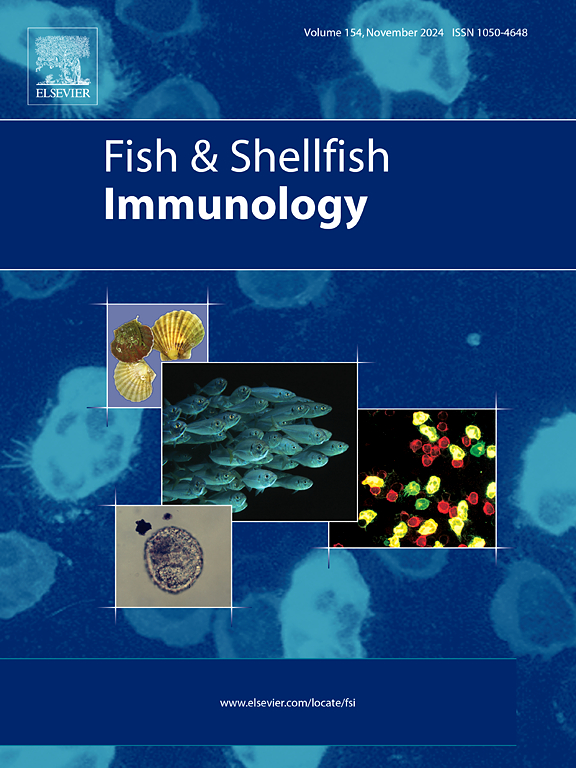The underrated immune role of bivalve ‘serous cells’: New insight from inflammatory responses of the Manila clam Ruditapes philippinarum
IF 4.1
2区 农林科学
Q1 FISHERIES
引用次数: 0
Abstract
This study investigated the immune role of serous cells from the bivalve Ruditapes philippinarum. Histochemical and immunohistochemical assays revealed that the serous cells contained large cytoplasmic vacuoles rich in heparinoid molecules. Heparin and histamine were detected within vacuoles, with distinct spatial distributions, and histoenzymatic assays for serine proteases revealed both tryptase and chymase activity. These findings, together with membrane immunolabelling for c-kit, suggest similarities with vertebrate mast cells. After in vivo bacterial inoculation, serous cells first accumulated at the injury site within 12 h, and 15 h after in vitro treatment, a significant increase in the percentage of serous cells was observed in bacteria-treated samples, supporting targeted responses of proliferation and differentiation following bacterial challenge. Serous cells also underwent marked degranulation following bacterial stimulation, and aggregates of granulocytes, hyalinocytes and serous cells appeared within 1 h of treatment. Extracellular trap formation (ETosis), which is rich in degranulated serous cells and trapped dying bacteria, was observed after 15 h. Serous cells showed nuclear envelope loss and chromatin fragmentation. The extracellular nets were primarily composed of fragmented chromatin and amyloid fibrils forming a scaffold of woven fibres, to which the adhesion of heparin, histamine, and serine proteases occurred after their release into the extracellular environment. To our knowledge, this is the first study that highlights the important role of serous cells in the immune response of bivalves and provides new perspectives for future investigations into the modulation of the inflammatory process.

求助全文
约1分钟内获得全文
求助全文
来源期刊

Fish & shellfish immunology
农林科学-海洋与淡水生物学
CiteScore
7.50
自引率
19.10%
发文量
750
审稿时长
68 days
期刊介绍:
Fish and Shellfish Immunology rapidly publishes high-quality, peer-refereed contributions in the expanding fields of fish and shellfish immunology. It presents studies on the basic mechanisms of both the specific and non-specific defense systems, the cells, tissues, and humoral factors involved, their dependence on environmental and intrinsic factors, response to pathogens, response to vaccination, and applied studies on the development of specific vaccines for use in the aquaculture industry.
 求助内容:
求助内容: 应助结果提醒方式:
应助结果提醒方式:


